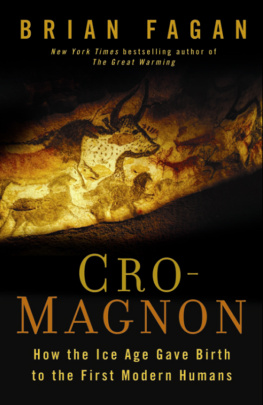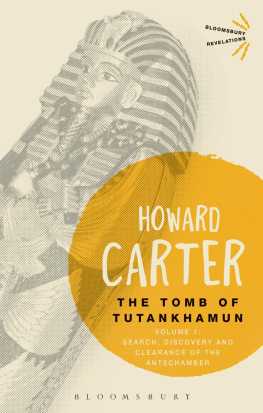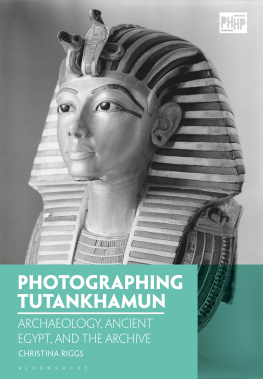Lord
and
Pharaoh
If this chapter be recited for the deceased he shall be strong upon earth before Ra, and he shall have a comfortable burial [or tomb] before Osiris, and it shall be of great benefit to a man in the Underworld. Sepulchral bread shall be given unto him, and he shall come forth into the presence [of Ra] day by day, and every day, regularly, and continually.
Book of Coming Forth by Day [The Book of the Dead, ca. 1550 B.C.]
In Egyptology, as in everything else, the great idea is to do something new and sensational and not laboriously potter over what has been done before.
William Randolph Hearst, 1900
First published 2015 by Left Coast Press, Inc.
Published 2016 by Routledge
2 Park Square, Milton Park, Abingdon, Oxon OX14 4RN
711 Third Avenue, New York, NY 10017, USA
Routledge is an imprint of the Taylor & Francis Group, an informa business
Copyright 2015 Taylor & Francis
All rights reserved. No part of this book may be reprinted or reproducedor utilised in any form or by any electronic, mechanical, or other means, now known or hereafter invented, including photocopying and recording, or in any information storage or retrieval system, without permission in writing from the publishers.
Notice:
Product or corporate names may be trademarks or registered trademarks, and are used only for identification and explanation without intent to infringe.
Library of Congress cataloging-in-Publication Data
Fagan, Brian M., author.
Lord and Pharaoh Carnarvon and the search for Tutankhamun / Brian Fagan.
pages cm
Includes bibliographical references and index.
ISBN 978-1-62958-151-4 (pbk. alk. paper)ISBN 978-1-62958-152-1 (institutional ebook)ISBN 978-1-62958-153-8 (consumer ebook)
1. Tutankhamen, King of Egypt. 2. Tutankhamen, King of EgyptTomb. 3. Carnarvon, George Edward Stanhope Molyneux Herbert, Earl of, 18661923. 4. Excavations (Archaeology)EgyptValley of the Kings. 5. Valley of the Kings (Egypt)Antiquities. 6. EgyptologistsGreat BritainBiography. I. Title.
DT87.5.F34 2015
932.014dc23
2014046725
ISBN.978-1-62958-151-4 paperback
I wrote this book because I wanted to know more about Lord Carnarvon, the aristocratic half of the famous Carnarvon-Carter partnership that discovered Tutankhamuns tomb in 1922. The Fifth Earl is a little-known figure in the drama compared with his archaeological colleague, Howard Carter, who has been the subject of several admirable biographies. But it was the Earl who gambled large sums on finding Tutankhamunand won. Unfortunately, much of Carnarvons correspondence was destroyed by World War II bombs, so to write a comprehensive life would be a time-consuming, difficult task. I thought, however, that a short essay would be a viable alternative that would satisfy my curiosity, and so it has proved.
As I moved the story into the Valley of the Kings, I was startled to find that almost nothing has been published about the young pharaoh himself beyond his tomb, much speculation, and some bare details of his short reign. What was he like as a person? Did he really restore ancient religious beliefs? Who reigned on his behalf? Bookshelves of popular and more technical works discuss the discovery, but Tutankhamun himself and his life have escaped much scrutiny beyond the basics.* Clearly, there was a fascinating story here, too. So I decided to do something unconventional and write a parallel account of both men. They turned out to have much in commonprivileged upbringings, frail health, isolation from the real world, ingrained senses of entitlement, and even a common cause of deathfrom the effects of an infected mosquito bite. And, of course, they met in the end with the discovery of the pharaohs tomb. The result is a complex but fascinating story that opens windows into the long-forgotten reign of a boy king and the volatile Egyptological world of a century ago with its rich, often competing, personalities. I thoroughly enjoyed my excursion into two unusual lives.
The book is a straightforward narrative, insofar that it is possible to achieve this with two separate lives over three thousand years apart. The first two chapters set the stage and bring the story of the Valley of the Kings up to the moment in 1914 when American digger Theodore Davis announced (wrongly) that the Valley was exhausted, that no more tombs awaited discovery. We then embark on the two biographies, starting with Tutankhamuns early life. The chapters that follow alternate between the pharaoh and the Earl as they pass through different stages of their lives. Obviously, in the case of Tutankhamun, there are major gaps in the story that will never be known. I have used some of the artifacts from his tomb, including personal possessions, to fill out the portrait. Ive also made use of limited amounts of fictional dialogue where I feel it helps the momentum of the storybut dialogue that must have approximated to what was really said at the time. With Tutankhamuns death and its aftermath, the narrative shifts to the search for, and discovery of, the tomb, when Carnarvons gamble pays off. The story ends with the opening of the burial chamber, Carnarvons death, and the troubled aftermath. Egyptologists continue to argue, sometimes passionately, over such controversies as the cause of the pharaohs death, or whether his widow wrote to the Hittites. In most cases, Ive discussed these arguments briefly in the Notes, to avoid interrupting the narrative.
This book is a microcosm of archaeological discovery, but its also an account of a changing Egyptological scene. When Carnarvon arrived, wealthy benefactors employed archaeologists and shared in the finds. Then Tutankhamun came along at a time of rising Egyptian nationalism, and the archaeological world changed, too. Institutions replaced individuals; wealthy patricians no longer received ancient treasures.
The closing chapter is something completely differentan essay aimed at archaeologists about writing a book like this.
Let the play begin Life! Prosperity! Health!
Acknowledgments
This book has benefited from advice from many Egyptologists over the years, some, alas, deceased. I am grateful to them all, too many to list. Aiden Dodson advised me at critical points. My esteemed colleague Stuart Smith read the entire manuscript and corrected my sins, for which I will be eternally grateful. Nadia Durrani encouraged me at key moments. My literary guru, Shelly Lowenkopf, was always there for me, especially at the eureka moment when the idea of a parallel biography came to mind. He also advised me on dialogue. Steve Brown drew the plans and maps with his usual skill. Detta Penna, Stacey Sawyer, and Ryan Harris skillfully guided the manuscript through production and saved me from many errors. My greatest debt is to my good friend Mitch Allen, who agreed to publish Lord and Pharaoh. Our relationship goes back many years and encompasses several books, which Ive enjoyed writing.
Authors Note
Geographical place names are spelled according to the most common usages. In the case of major locations, I have tended to use the modern or historical names. For example, Thebes is used as the name for ancient Luxor, the Waset of Ancient Egypt. I use the Levant (the Eastern Mediterranean coastal region), the Near East, and Southwest Asia interchangeably.




